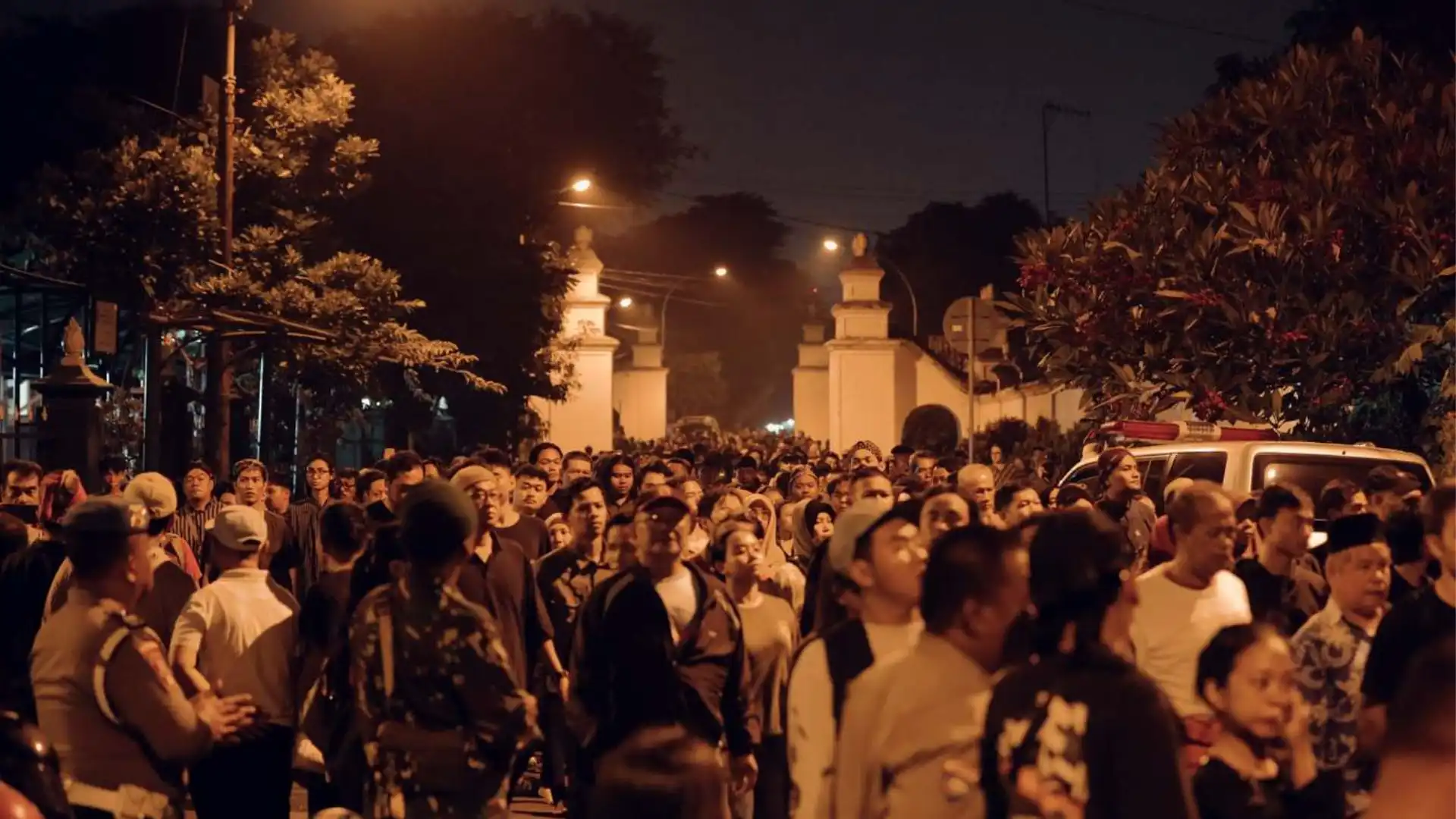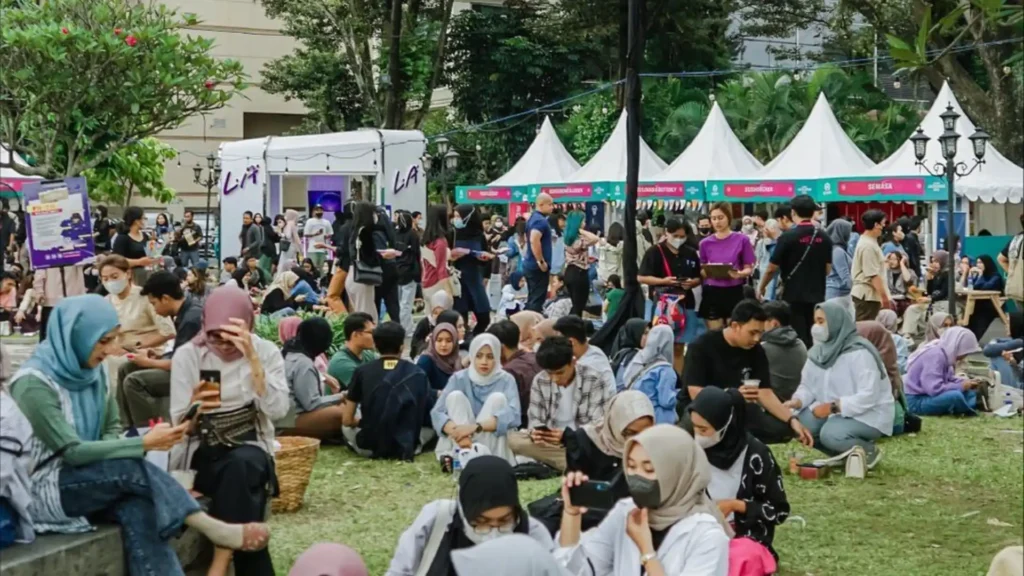Every year, the Javanese people commemorate a significant day known as Satu Suro. This moment is closely associated with sacred rituals and traditions that are carried out exclusively on this day. Satu Suro marks the beginning of the Javanese New Year and is seen as a spiritual turning point, a time for reflection and renewal.
In the Javanese language, Suro refers to the first month of the year, while Satu means “one,” symbolizing the first day of that month. The commemoration of Satu Suro is traditionally marked with various unique and sacred ceremonies, especially in Yogyakarta and Surakarta. These two cities are known for preserving Javanese traditions through four royal institutions: the Yogyakarta Palace, Kasunanan Surakarta, Pura Pakualaman, and Pura Mangkunegaran.
Table of Contents
History of Satu Suro Tradition
Satu Suro was first introduced during the reign of Sultan Agung Hanyokrokusumo (1613–1645) of the Islamic Mataram Kingdom. The Javanese New Year was aligned with the Islamic New Year due to the growing influence of Islam in Java during the 16th century. This unification of the Javanese and Islamic calendars occurred on Jumat Legi, Jumadil Akhir 1555 Saka, which corresponds to July 8, 1633 AD.
In developing what came to be known as the Sultan Agungan Calendar, Sultan Agung envisioned a system that encouraged people from all walks of life to reflect inwardly and purify themselves from negative influences, a symbolic new beginning.
The term Suro is derived from the Arabic word “Ashura,” meaning ten in numbers. Sultan Agung, serving as both a spiritual and political leader, initiated sacred rituals to mark the Javanese New Year, such as the Jamasan (cleansing of royal heirlooms) and the Kirab (parade).
These Suro traditions hold deep philosophical meaning and remain especially strong in Yogyakarta and Surakarta, where they are preserved as part of the region’s royal heritage. Sultan Agung hoped that during the month of Suro, his people would take time to cleanse themselves spiritually and reflect on the past, fostering a renewed sense of purpose and harmony.
Javanese Month
The Javanese calendar follows a system that differs significantly from the modern Gregorian calendar. One unique feature is the five-day cycle known as Pancawara, or Pasaran, which includes the days Kliwon, Legi, Pahing, Pon, and Wage, each carrying its own symbolic and philosophical meaning.
Additionally, the Javanese calendar features its own set of month names. Here is a list of the months in the Javanese calendar:
- 1st Month: Suro
- 2nd Month: Sapar
- 3rd Month: Mulud
- 4th Month: Bakda Mulud
- 5th Month: Jumadil Awal
- 6th Month: Jumadil Akhir
- 7th Month: Rejeb
- 8th Month: Ruwah
- 9th Month: Siyam
- 10th Month: Sawal/Syawal
- 11th Month: Sela
- 12th Month: Besar
Discover Satu Suro Tradition in Yogyakarta
In Yogyakarta, the Satu Suro tradition is most vividly observed at the Yogyakarta Palace and Pura Pakualaman, two royal institutions that have faithfully preserved their ancestral customs. Although both are rooted in Javanese heritage, each conducts its distinct rituals to welcome the sacred night of Suro.
Here are some of the sacred activities carried out during this deeply symbolic night:
Keraton Yogyakarta
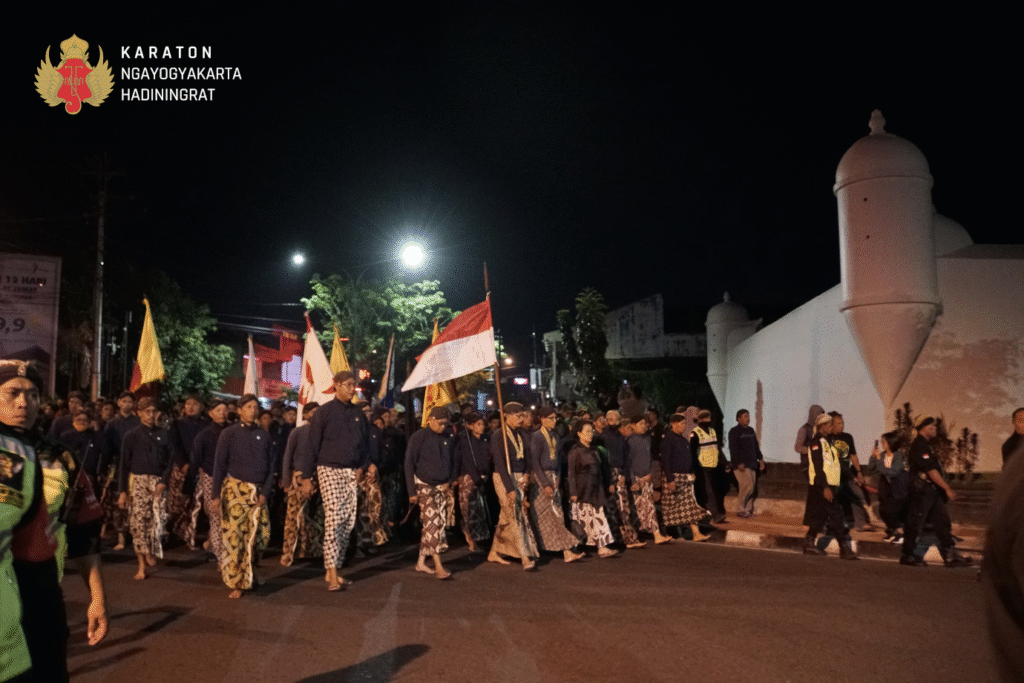
1. Lampah Budaya Mubeng Beteng
On the eve of Satu Suro, the Keraton Yogyakarta holds a solemn ritual known as Lampah Budaya Mubeng Beteng. This sacred procession involves walking barefoot in silence, circling the palace fortress in a counterclockwise direction. It is performed by the Abdi Dalem (royal servants) along with members of the local community, symbolizing spiritual reflection and purification.
Before the walk begins, the Abdi Dalem lead a series of prayers, marking the end of the year, welcoming the new one, and offering intentions for the sacred month of Suro. Only after these invocations is the Lampah Budaya Mubeng Beteng procession set into motion, unfolding quietly through the night under the weight of tradition and devotion.
2. Tapa Bisu
As part of the Mubeng Beteng ritual, Tapa Bisu, meaning “silent meditation,” requires participants to remain completely silent throughout the procession. Without uttering a word or making any sound, they walk in solemn reflection. This ritual is a symbolic act of humility, intended for self-introspection, spiritual cleansing, and seeking forgiveness from God as the new year begins.
3. Bubur Suro
Bubur Suro is a special porridge traditionally served after the entire Suro procession is completed. This savory porridge is rich in flavor, made with ingredients like coconut milk, salt, lemongrass, and ginger, and typically accompanied by side dishes such as chicken opor, fried chili sambal, and a generous sprinkle of seven types of nuts.
The use of seven different nuts carries symbolic meaning, representing the seven days of the week, a reminder to remain grateful for the continuous blessings bestowed by God throughout each day.
- Route: Keben (Kamandungan Lor) → Agus Salim St. → Ngabean → Wahid Hasyim St. → MT. Haryono St. → Plengkung Gading → Mayjen Sutoyo St. → Brigjen Katamso St. → Ibu Ruswo St. → Keben (Kamandungan Lor).
- Date: June 26, 2025 at 23.00 Onwards
Discover more about Keraton Yogyakarta and stay updated with their latest events by following @kratonjogja.event
Pura Pakualaman
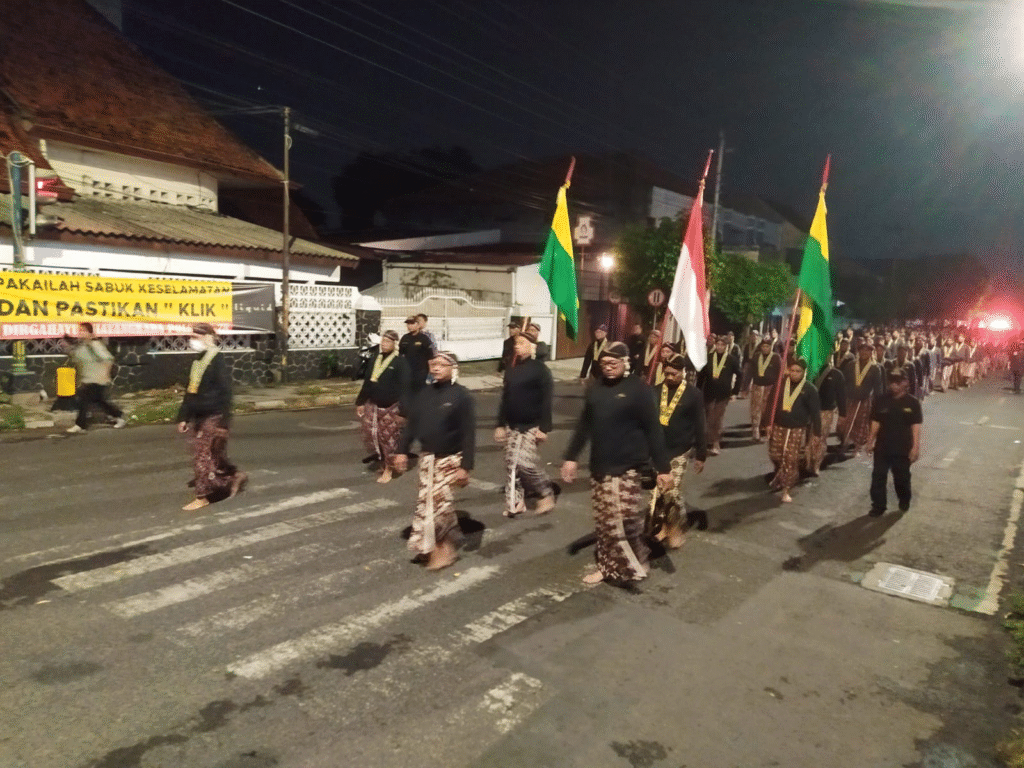
Lampah Ratri
Pura Pakualaman also upholds its own Satu Suro tradition through a ritual known as Lampah Ratri, a nighttime procession in which participants walk in a full circle around the Beteng Kadipaten Pakualaman (Pakualaman Fort). The journey covers a distance of approximately 6 kilometers, beginning and ending at the Puro Pakualaman complex.
- Route: Harjowinatan St. → Purwanggan St. → Harjono St. → Harjono St. → Sultan Agung St → Jagalan St. → Ki Mangunsarkoro St. → Tamansiswo St. → Surokarsan St. → Bintaran St. → Heading Back to Pura Pakualaman.
- Date: June 26, 2025 at 23.30 Onwards
All the latest information about Pura Pakualaman is available via @purapakualaman.
Get to Know Satu Suro Tradition in Surakarta
Keraton Kasunanan Surakarta
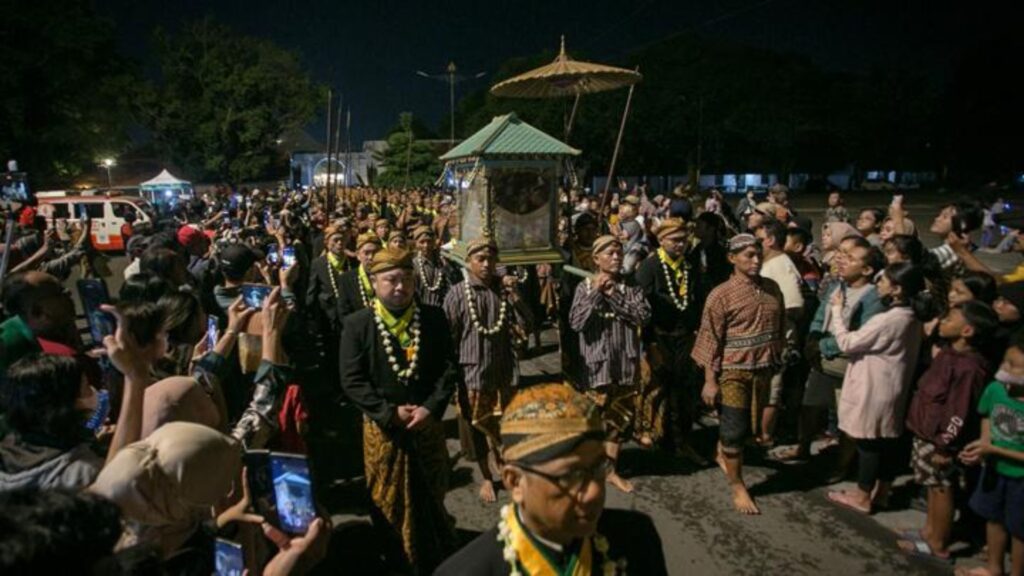
Kirab Pusaka
During Satu Suro, the Keraton Kasunanan Surakarta holds a sacred parade that circles the palace grounds. Similar to the procession in Yogyakarta, participants in Surakarta are required to walk barefoot and maintain complete silence throughout the ritual, emphasizing reflection, humility, and spiritual discipline. One unique aspect of this ritual is the presence of the palace’s sacred buffalo, which is also included in the procession, an honored figure believed to embody strength, protection, and ancestral connection.
- Route: Karaton Kasunanan Surakarta Hadiningrat → West Supit Urang → Pakoe Boewono St. → Jend. Sudirman St. → Mayor Kusmanto St. → Kapten Mulyadi St. → Veteran St. → Yos Sudarso St. → Slamet Riyadi St. → Pakoe Buwono St. → Supit Urang → Heading back to Karaton Kasunanan Surakarta Hadiningrat.
- Date: June 26, 2025 at 23.59 Onwards
Learn more about Keraton Kasunanan Surakarta by following @kraton.solo.
Pura Mangkunegaran
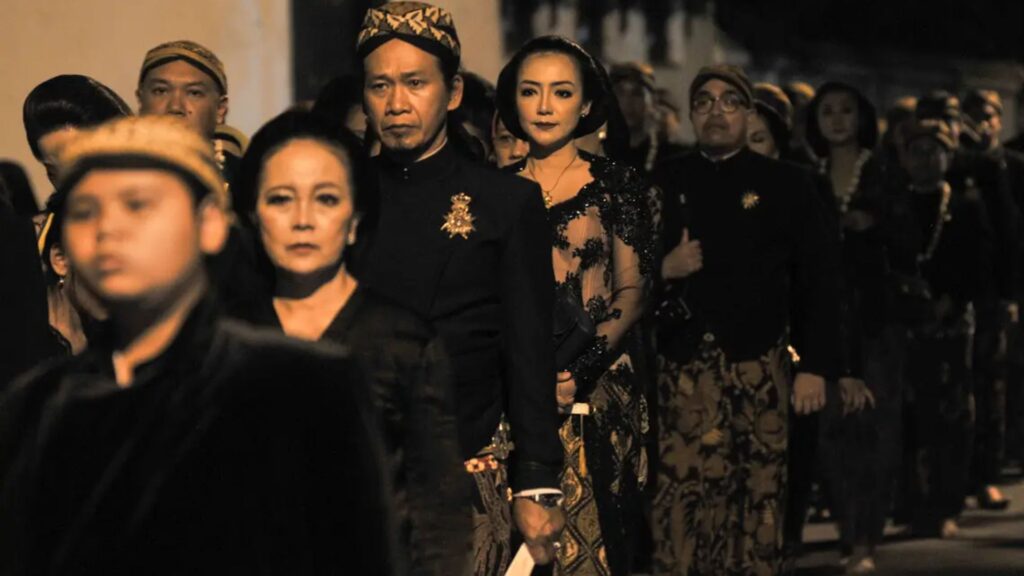
Kirab Pusaka Dalem
Pura Mangkunegaran also holds its sacred procession to mark the eve of Suro, known as the Kirab Pusaka Dalem. This sacred parade is led by the Cucuk Lampah, the ceremonial leader at the front of the procession, followed by the Abdi Dalem. The ritual is a formal occasion, attended by members of the royal family and special guests.
- Route: Pura Mangkunegaran → Diponegoro St. → Slamet Riyadi St. – Kartini St. → RM Said St. → Teuku Umar St. → Slamet Riyadi St. → Diponegoro St. → Pura Mangkunegaran
- Date: June 26, 2025 at 19.00 Onwards
Get the newest updates and event info from Pura Mangkunegaran by following @info.mn

